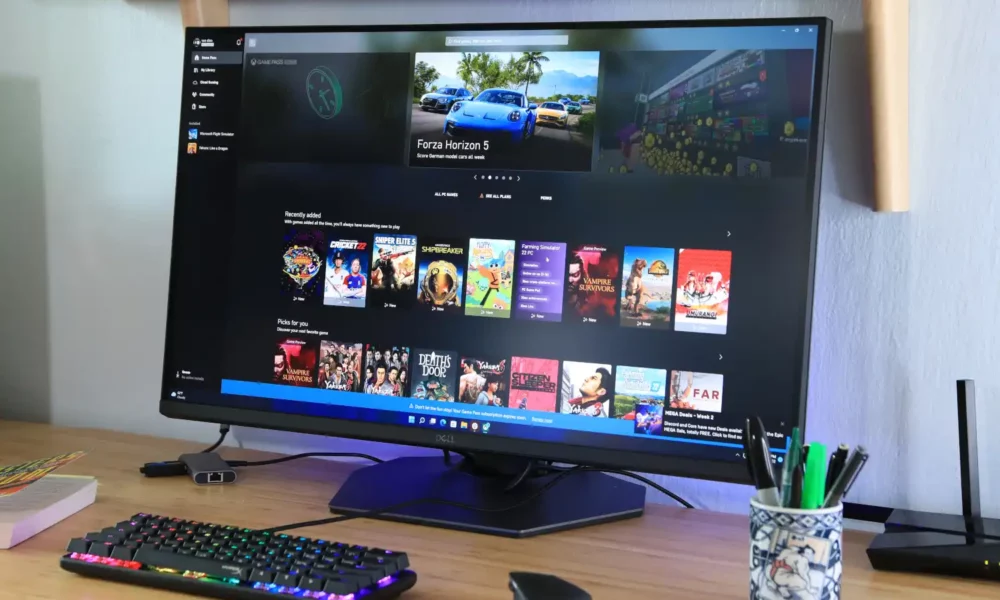Monitor Price vs. Performance: What to Consider Before Buying

A proper balance between the price and performance of a monitor makes it a value-for-money product. Nobody can offer a high-performing monitor at a cheap price. Again, a low performing monitor can not have a too high price tag. Rather, the price should be reasonable according to the features and value of the monitor offered to the users.
Today, we will talk about the price vs. performance balance of a monitor and how you can have a win-win situation on both sides.
Monitor Types and their Price Ranges
There are two categories of monitors depending on types and their price ranges. These are –
Depending on the Display Panel
Depending on the display panel type, there are 3 major types of monitors.
-
TN (Twisted Nematic)
These panels are popular for their fast response time and high refresh rates. TN panels are ideal for high-end gaming monitors. However, they have poor color accuracy and narrow viewing angles.
-
IPS (In-Plane Switching)
IPS panels provide better color accuracy and wider viewing angles than TN panels. They have a slightly slower response time but are very popular among editors and designers.
-
VA (Vertical Alignment)
Although the color accuracy and response time are slower, VA panel monitors provide better contrast ratios and deeper black color than any other panels.
Panel types are not the only factor that impacts the monitor price in Bangladesh, but it has a significant influence.
Depending on the Usage
Now, depending on usage, you can again divide monitors into 3 major criteria.
-
General Use Monitor
The resolution is typically FHD (1080p) and has average color quality. The refresh rate is normally 60 Hz or 75 Hz and is enough for daily usage like browsing the internet or office work. Their price range starts from around 10K and can go up to 25-30K.
-
Professional Use Monitor
Color accuracy and wide color gamuts, like sRGB, DCI-P3, and Adobe RGB, are the main focus for these monitors. Response time or refresh rate can be average; it’s not a big deal. These monitors are for professional graphic designers, video editors, photographers, and others who need high color accuracy. They can cost you between 30K to 80K.
-
Gaming Monitor
It is the most popular category of monitors with a huge demand on the market. These monitors come with a high refresh rate that can go up to more than 144 Hz, low response time of 1 ms, and have several unique features like FreeSync or G-Sync. They are dedicated to high gaming experience and can work for productive activities. Their price range is similar to or higher than professional monitors that range between 50k to more than 100K.
No matter which monitor you pick, they offer different features and balance between price and performance.
Features vs Price of Monitor
The features section is the main part that determines a monitor price. There are some additional factors like market condition, market region, demand, and supply that can impact the pricing. Some specific features can increase monitor price significantly. Let’s explore these features and determine if they are worth the extra money.
Refresh Rate
Refresh rate is a crucial feature for gaming monitors, but in the other categories, it might not be that important. A monitor with a high refresh rate, like 144 Hz, can cost you way more than a regular 60 Hz monitor.
Well, it determines how smoothly you can play games with this monitor. So, are those extra frames worth the money? It depends; if you are a professional esports player, then of course it does.
Resolution
Another big factor for every type of monitor is display resolution. Basic FHD monitors are good enough for daily life. But if you are a professional video editor, you might need a high-resolution monitor like QHD or 4K. If you are working on a 4K footage, you need a 4K monitor for the proper visual. So, the extra money for higher resolution is worth it for video editors.
Color Accuracy
It mainly depends on the panel type, but color accuracy is essential for video editors and graphic designers. For these specific users, a high color accuracy like sRGB or Adobe RGB is essential.
So, if you are in creative design, editing, or any other related industry, you need to pay more for better color visuals, which is worth it.
Some other features also influence monitor price to an extent, like connectivity, ergonomics, HDR, and others. These are optional features and depend on your personal and setup preferences.
Bottom Line
In the end, the balance between the price and performance of a monitor is fully dependent on your usage. So, make sure you buy an appropriate monitor for your specific usage. Ultimately, it is the only way to keep a win-win balance between price and performance.





